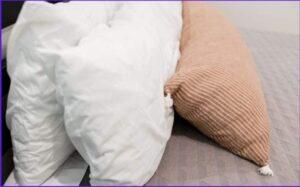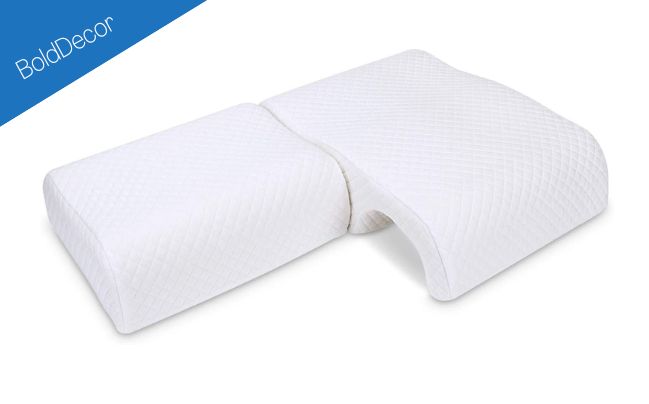Lots of pillows have dust mites living in them. This can cause allergies for anyone who is allergic to dust mites. Luckily, there’s an easy solution — With washable pillows and pillow protectors, you can keep dust mites away from your pillows.
In this article, We answer this question — ”do pillows have dust mites” in detail. We also show you some of the quickest ways to identify if your pillow is infested with dust mites and how to get rid of them. We also look at little dust mite-proof pillows and mattress covers as your first line of defense.
Do pillows have dust mites?
The short answer to this question, “Do pillows have dust mites? ” —is yes. However, there are certain things you can do to reduce their presence on pillows and even remove them.
Dust mites are not only found in pillows, but also in your carpet and upholstered furniture. They like to be warm and cozy, and it’s usually dusty areas that have the highest concentration of them.
When you sleep at night, the temperatures cool down and the air becomes more humid, which is great for dust mites to crawl out of their hidings.
How do I know if my pillow has dust mites?

Dust mites feed on skin flakes and organic material found in beds, which means they thrive where people spend a lot of time resting or sleeping, as well as where we store clothing and bedding like pillows and mattresses.
Sometimes it can be difficult to tell if your pillow has dust mites because they are too tiny. However, there are few signs of dust mites allergen.
- Nasal congestion and sneezing.
- Itchy, red, or watery eyes.
- Itchy nose, mouth, or throat.
- Cough.
- Chest tightness.
- Difficulty breathing and
- wheezing.
How do I get rid of dust mites in my pillows?
Dust mites make their home in warm, dry environments like your bedding. It’s important to wash your pillows at least once a week (especially in the summer) and dry at the hottest setting recommended for the fabrics — this will kill dust mites and their eggs.
More ways to get rid of dust mites
- Use a bed with a wooden or metal frame.
- Wash sheets and pillowcases at least once a week.
- Wash comforters and bedspreads – for one to two months.
- Consider switching to an electric blanket, this will reduce humidity on bed surfaces.
- Wash bedding in hot water.
Dust mite proof pillows and mattress
- Ultrablock Mattress Protector
- Saferest Premium Mattress Protector
- Plushdeluxe Mattress Protector
- Mission Allergy Dust Mite
How do dust mites get in your bed?

Dust mites occur naturally and can be seen in many homes. Unlike pet allergens, dust mite allergens do not usually stay airborne for long, but instead, settle within minutes into fabrics.
These allergens easily cling to bedding, mattresses, upholstered furniture, carpets, and curtains, which also serve as a breeding ground. Most exposure to dust mite allergens occurs while sleeping and when the dust is disturbed during bed-making or other movements.
Do dust mites fly in the air?
Dust mites don’t have wings, so they can’t fly, but they do have legs. They live on your carpet, on top of your furniture, and even in your bed.
Do air purifiers help with dust mites?
While an air purifier alone cannot remove dust mites, dust, and other allergens from your home, it can remove dust mite particles and any particles that you might ingest while breathing.
Allergens are a common problem for anyone with allergies or asthma. Dust mites, along with their dander, are able to cause concerns because they tend to become airborne and can be blown around your house by airflow from fans, vents, or AC units.
Do all houses have dust mites?
Virtually every house has dust mites, whether you know it or not. But not many of us know that because unless you have an allergic reaction, you don’t know you’re sharing your home with these unseen critters.
National Cancer Institute (NCI) reports that there is an estimated 90 percent of homes in the USA contain dust mites.
They’re among our planet’s most populous denizens, with estimates ranging from hundreds to trillions upon trillions of them.
How often should you replace pillows?

How often you should replace pillows depends on a few factors. But a good rule of thumb is one to two years. This may not always be the case with low-quality pillows—when your pillow isn’t supportive enough for your neck and head, you know it is time to get a new one.
Final thoughts!
Dust mites stay in pillows, and they like warm and humid climates. They also enjoy a diet of human skin cells which accumulate in pillows.
While it may not pose a too dangerous health problem, dust mites can affect people who suffer from allergies.
Useful Resource:





